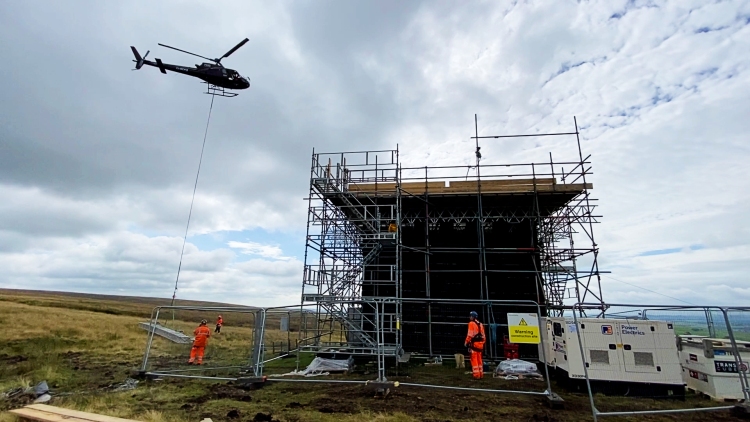
Helicopters have been used to airlift construction materials into position for essential repairs to a ventilation shaft in one of Britain’s deepest railway tunnels.
The tunnel between Edale and Chinley goes underneath key peaks near Kinder Scout and Mam Tor in the Peak District National Park.
Because of its remote location, helicopter pilots were drafted in to transport vital materials and components for work on the tunnel’s ventilation shaft.
Dug 241 metres into the hillside, it’s one of the deepest railway ventilation shafts in the country.
But as well as providing air to the tunnel more than 250 metres below, the 127-year-old ventilation shaft has also inadvertently acted like a huge drainpipe. When rain falls on the land above it seeps through the soil before penetrating the ventilation shaft’s brickwork, with water cascading into the tunnel and tracks below.
Network Rail engineers have installed a system of drainage pipes to collect the water in a controlled way so it can be diverted into drains in the tunnel itself. Network Rail hopes the move will protect the brickwork and reduce the risk of passengers and freight on the Hope Valley line from future delays caused by water leaks.
For the new pipes and water collecting devices to be installed, engineers built a temporary lift platform to work from using winches and pulleys. Network Rail teams were lowered into the ventilation shaft in a custom-built cradle.
Drainage improvements at track level could only take place on Saturday nights when trains weren’t running. The work started in August 2021 and finished this week.
Dennis McGonnell, Network Rail works delivery manager, said: “It’s a huge privilege to keep heritage structures like Cowburn Tunnel in good condition for rail passengers and freight and it’s amazing to see up close the quality of the Victorians’ workmanship.
“We work on a lot of structures in remote locations but working in a tunnel this deep and using helicopters to get materials to site is rare. It makes you realise what an amazing feat of engineering building this tunnel and ventilation shaft was all that time ago without the modern machinery we have today.”











